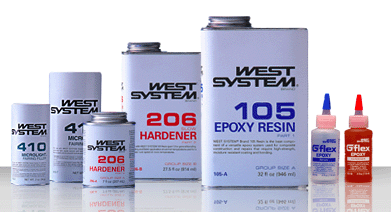
By Tom Pawlak — GBI Technical Advisor
PVA (polyvinyl alcohol) is a water-based liquid plastic that can be applied to waxed molds to prevent molded parts from sticking. PVA is not always required. Often laminators rely solely on mold release wax to create a surface contaminant on the mold that allows parts to be removed. However, on complicated molds and on new molds, when the risk of sticking a part in a mold is greatest, PVA can be applied over a waxed mold to minimize the chance of sticking a part.
PVA can be applied by brush, paint roller or with spray equipment. PVA often leaves a texture on the surface of the mold after it dries. This texture is duplicated or molded into thepart produced in the mold. For parts that will be painted later, this texture is not an issue. However, for parts that rely on the mold surface to create a smooth final finish, the texture can be a problem.
To achieve the smoothest and least textured PVA coating, apply it with spray equipment. The preferred application technique is to spray a couple of very fine mist coats a few minutes apart before applying a more generous wet coat over the entire mold. This technique minimizes the likelihood of getting “fisheyes” or imperfections in the coating and produces a very smooth PVA release coating.
For amateur builders, PVA can be difficult to purchase in small quantities and often requires delivery from out of town sources that may include a hazardous shipping fee. It is most often sold in liquid form, which requires spray equipment for best results. However, there are sources of PVA in aerosol form which makes spray application convenient for small part laminators.
Hair spray as a mold release
A number of years ago, my friend Jack Anderson used hair spray in place of PVA as a mold release. He had built a mold to make air vents for his sailboat. The mold had minimal draft angle (relief angle which allows parts to be removed from a mold after the laminate cures). Ordinarily in our Gougeon Brothers shop, we would prepare molds with multiple coats of paste wax without applying PVA. With this mold, however, the parts were difficult to remove and it was obvious that a back-up mold release would be required to make removing parts easier.
Jack tried brushing PVA into the mold but it ran down the sides and puddled in the bottom. It also fish-eyed on the sides of the mold, creating a disappointing effect.
Reasoning that hair spray is water-based plastic (because it can be washed out with water after it has dried), Jack decided to try it as a mold release on his vent mold. He misted on the first couple of coats and then applied a heavier coat. Using the hair spray as a back up mold release, Jack was able to release the parts from his mold with less difficulty.
It’s been years since Jack showed me his hair spray/mold release trick but recently I found a need for PVA on a mold I was building at home. Since the plug for the mold was a bit complicated, I felt I needed some insurance to make sure the mold would release from the plug. I decided to give Jack’s hair spray trick a try.
First, I waxed the mold plug with five coats of Meguiar’s Mirror Glaze 8 Maximum Mold Release Wax™ in preparation for applying the hair spray/mold release. I could have also used Meguiar’s Mirror Glaze Automotive Paste Wax™ as we have used it successfully as a mold release wax on molds that were not exposed to temperatures over 110°F.
Then I selected an extra heavy hold hair spray, choosing it rather than a lighter hold hair spray because it would be less watered down. I also chose an aerosol rather than a pump type because the aerosol would work well for misting the mold. The good news is my mold released effortlessly from the plug. Since then, we have tried two other heavy-duty hair sprays and both types substituted nicely for the traditional PVA mold release.
Removing PVA before painting
PVA transfers to the laminated part when the part is removed from the mold. It is important to remove the PVA from the molded part before painting because it will cause paint adhesion problems and surface imperfections in the paint if left on the surface. We remove PVA with warm water and an abrasive pad before sanding in preparation for paint.
Test first
If you decide to use hair spray in place of PVA for releasing cured epoxy, be sure to test it ahead of time on a non-critical surface. Keep in mind that PVA is normally applied over waxed surfaces and is not particularly effective as a mold release on its own.
Speaking of wax
For amateur builders, automotive paste wax made with carnauba wax can often be substituted for mold release wax. Meguiar’s Mirror Glaze Automotive Paste Wax is one brand that has worked well for us. Avoid liquid car waxes, as they are not as effective and can cause release problems. Apply at least three coats before you use the mold for the first time, then apply another coat after each use Test any wax you plan to use to make sure it will release effectively before using it on critical projects.
Epoxyworks 14 / Fall 1999





